Messier Catalog: M21 - M30
M11 - M20 | Messier Menu | M31 - M40
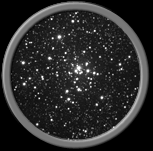 M21
Galactic Cluster in Sagittarius
Common Names: None
6531
6.5
18h 04.6m
-22° 30'
M21
Galactic Cluster in Sagittarius
Common Names: None
6531
6.5
18h 04.6m
-22° 30'
Located in the constellation Sagittarius, M21 is an open cluster of about 40 stars varying in magnitude from 9 to 12. The cluster is located about 3,000 light-years from Earth and has a diameter of about 10 light-years. M21 has a total visual magnitude of about 6.5, which makes it an impressive sight in any small telescope. It can also be easily located with binoculars just a short distance from M20, the Trifid Nebula.
Image credit: REU program/NOAO/AURA/NSF
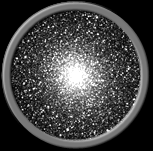 M22
Globular Cluster in Sagittarius
Common Names: None
6656
5.1
18h 36.4m
-23° 54'
M22
Globular Cluster in Sagittarius
Common Names: None
6656
5.1
18h 36.4m
-23° 54'
Yet another fine object to be found in the rich hunting grounds of Sagittarius a globular cluster known as M22. This bright cluster contains about 70,000 stars of which 32 are known to be variable. At a distance of around 10,000 light-years, M22 is one of the nearer globular clusters. It is nearly 200 light-years in diameter and is notable for containing a very faint planetary nebula. With a visual magnitude of 5.1, it can easily be seen with the naked eye and is a beautiful sight in any optical instrument.
Image credit: N.A.Sharp, REU program/NOAO/AURA/NSF
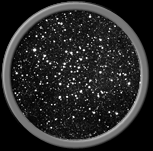 M23
Galactic Cluster in Sagittarius
Common Names: None
6494
6.9
17h 56.8m
-19° 01'
M23
Galactic Cluster in Sagittarius
Common Names: None
6494
6.9
17h 56.8m
-19° 01'
M23 is a loose galactic cluster of stars found in the constellation Sagittarius. This cluster lies about 2,150 light-years from Earth and contains about 150 stars of magnitude 10 and fainter. It stretches over a distance of about 20 light-years in diameter and has a total visual magnitude of 6.9. M23 can easily be resolved with binoculars and its large size makes it a prime candidate for small, wide-field telescopes.
Image credit: N.A.Sharp, REU program/NOAO/AURA/NSF
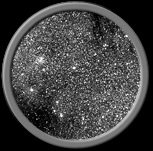 M24
Milky Way Patch in Sagittarius
Common Names: Sagittarius Star Cloud
6603
4.6
18h 16.9m
-18° 29'
M24
Milky Way Patch in Sagittarius
Common Names: Sagittarius Star Cloud
6603
4.6
18h 16.9m
-18° 29'
Located in Sagittarius, M24 is not really a true deep sky object. It is actually a cloudy patch of stars in the Milky Way. The area is framed by dark patches of dust, which gives it the impression of being a separate object. M24 has a total visual magnitude of 4.6, which makes it easily visible to the unaided eye. A good telescope will reveal a small galactic cluster known as NGC 6603 hiding in the center of M24.
Image credit: Vanessa Harvey, REU program/NOAO/AURA/NSF
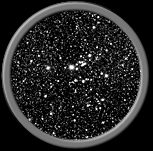 M25
Galactic Cluster in Sagittarius
Common Names: None
IC4725
6.5
18h 31.6m
-19° 15'
M25
Galactic Cluster in Sagittarius
Common Names: None
IC4725
6.5
18h 31.6m
-19° 15'
M25 is a relatively compressed galactic cluster found in the constellation Sagittarius. It contains about 86 stars, one of which is a known Cepheid variable. This cluster is located about 2,000 light-years from Earth and has a diameter of around 23 light-years. The 6.5 visual magnitude of M25 makes it easy to find with binoculars, but a small telescope will be able to reveal the many colors of its member stars.
Image credit: Hillary Mathis, Vanessa Harvey, REU program/NOAO/AURA/NSF
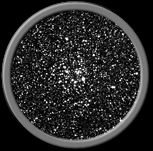 M26
Galactic Cluster in Scutum
Common Names: None
6694
8.0
18h 45.2m
-9° 24'
M26
Galactic Cluster in Scutum
Common Names: None
6694
8.0
18h 45.2m
-9° 24'
Located in the constellation Scutum, M26 is a small galactic cluster of about 90 stars. It can be found only 3 1/2 degrees from its cousin, M11, but is not nearly as impressive. This cluster lies about 5,000 light-years from us and has a diameter of around 22 light-years. Its visual magnitude of 8 makes it less bright than most of the other galactic clusters. This cluster can easily be seen with binoculars, but a 4-inch refractor telescope will only resolve more of its fainter stars.
Image credit: Hillary Mathis, Vanessa Harvey, REU program/NOAO/AURA/NSF
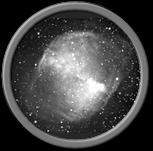 M27
Planetary Nebula in Vulpecula
Common Names: Dumbbell Nebula
6853
7.4
19h 59.6m
+22° 43'
M27
Planetary Nebula in Vulpecula
Common Names: Dumbbell Nebula
6853
7.4
19h 59.6m
+22° 43'
Commonly known as the Dumbbell Nebula, M27 was the first planetary nebula to be discovered. It is a shell of gas that was expelled from the nebula's central star. This object gets the name "dumbbell" from its hourglass, or dumbbell-like shape. Its distance is estimated to be about 1,250 light-years from Earth. A 13th magnitude star at the center of the nebula illuminates it from within. M27 is the brightest and most impressive object of its kind, and with a magnitude of 7.4 can be easily seen using any optical instrument.
Image credit: REU program/NOAO/AURA/NSF
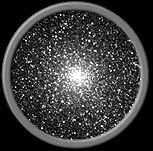 M28
Globular Cluster in Sagittarius
Common Names: None
6626
6.8
18h 24.5m
-24° 52'
M28
Globular Cluster in Sagittarius
Common Names: None
6626
6.8
18h 24.5m
-24° 52'
Located in the constellation Sagittarius, M28 is a tight globular cluster of several thousand stars. It lies about 19,000 light-years from Earth and has a diameter of around 75 light-years. This cluster's visual magnitude of 6.8 makes it a fine site in any optical instrument. A small telescope will reveal the cluster's slight oval shape. Some have even said it somewhat resembles a cucumber.
Image credit: NOAO/AURA/NSF
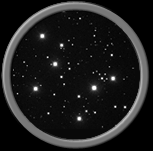 M29
Galactic Cluster in Cygnus
Common Names: None
6913
7.1
20h 23.9m
+38° 32'
M29
Galactic Cluster in Cygnus
Common Names: None
6913
7.1
20h 23.9m
+38° 32'
M29 is a small, coarse group of stars in the constellation Cygnus. It is located about 7,000 light-years from Earth. The cluster contains only six stars with a magnitude brighter than 9.5, which form a small, stubby dipper in the center. This is not a very impressive object when viewed in binoculars or small telescopes. Larger instruments will be needed to resolve the fainter stars in the cluster.
Image credit: Hillary Mathis/NOAO/AURA/NSF
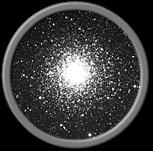 M30
Globular Cluster in Capricornus
Common Names: None
7099
7.2
21h 40.0m
-23° 11'
M30
Globular Cluster in Capricornus
Common Names: None
7099
7.2
21h 40.0m
-23° 11'
Located in the constellation Capricornus, M30 is a globular cluster of stars located about 25,000 light-years from Earth. This dense cluster is around 75 light-years in diameter and contains 12 known variable stars. It is actually approaching us at a speed of 164 kilometers per second. M30's large size and dense structure make it a remarkable object when viewed through binoculars or small telescopes.
Image credit: REU program/NOAO/AURA/NSF

 M21
Galactic Cluster in Sagittarius
M21
Galactic Cluster in Sagittarius M22
Globular Cluster in Sagittarius
M22
Globular Cluster in Sagittarius M23
Galactic Cluster in Sagittarius
M23
Galactic Cluster in Sagittarius M24
Milky Way Patch in Sagittarius
M24
Milky Way Patch in Sagittarius M25
Galactic Cluster in Sagittarius
M25
Galactic Cluster in Sagittarius M26
Galactic Cluster in Scutum
M26
Galactic Cluster in Scutum M27
Planetary Nebula in Vulpecula
M27
Planetary Nebula in Vulpecula M28
Globular Cluster in Sagittarius
M28
Globular Cluster in Sagittarius M29
Galactic Cluster in Cygnus
M29
Galactic Cluster in Cygnus M30
Globular Cluster in Capricornus
M30
Globular Cluster in Capricornus